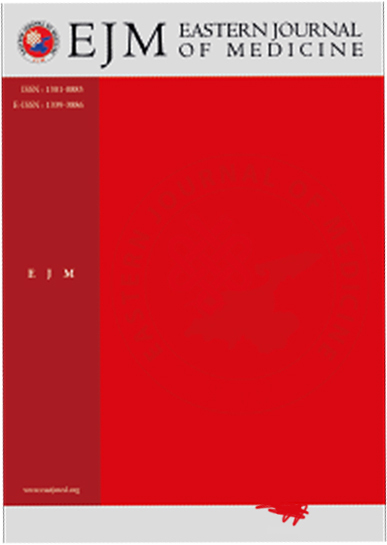Retrospective Evaluation of Patients Followed Up in the Pediatric Intensive Care Unit of Harran University Faculty of Medicine
Ali Ateş1, Nur AYCAN1, Kabil Shermatov21Department of Pediatrics, Yuzuncu Yil University, Van, Turkey2Department Of Pediatrics, Harran University, Sanlıurfa, Turkey
INTRODUCTION: Pediatric intensive care practices have significantly changed in the last 30 years. Our knowledge about the pathophysiology of life-threatening processes and the follow-up and treatment of pediatric patients with life-threatening diseases continues to expand in this process. This study evaluated the outcomes, treatment modalities, treatment responses, and clinical characteristics of patients hospitalized in the pediatric intensive care unit(PICU).
METHODS: 497 patients who were hospitalized and followed up in Harran University Faculty of Medicine, PICU, between January 2016 and December 2016, were evaluated.
RESULTS: Our study included 276(55.5%) male and 221(44.5%) female patients. The patients' median age and median PICU stay were 23 months(1-212 months) and seven days(1-134 days), respectively. The reasons for admission to the intensive care unit were respiratory system diseases in 171 patients(34.4%), poisonings in 88 patients(17.7%), neurological diseases in 71 patients (14.3%), gastrointestinal system diseases in 59(11.9%) patients, 42(4%) patients were admitted to the intensive care unit. The need for mechanical ventilation developed in 35.6% of the patients. 49.3%(n=245) of the patients had a comorbid disease. Some factors affecting clinical outcomes and mortality were identified. As a result of the regression analyses of these factors, mechanical ventilation requirement (OR=192.8), multi-organ failure (OR=21.2), disseminated intravascular coagulation (OR=9.6), thrombocytopenia (OR=2.4) and positive inotropic drug requirement (OR= 2.3) were associated with mortality was found to increase.
DISCUSSION AND CONCLUSION: Our findings showed that there are some factors affecting clinical outcomes. Mechanical ventilation requirement, multiple organ failure, disseminated intravascular coagulation, thrombocytopenia, and need for the positive inotropic drug was found to be effective on mortality.
Manuscript Language: English














